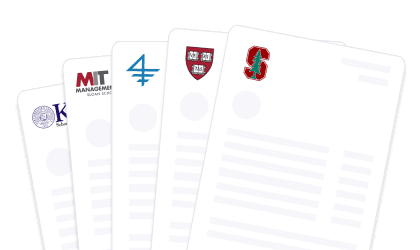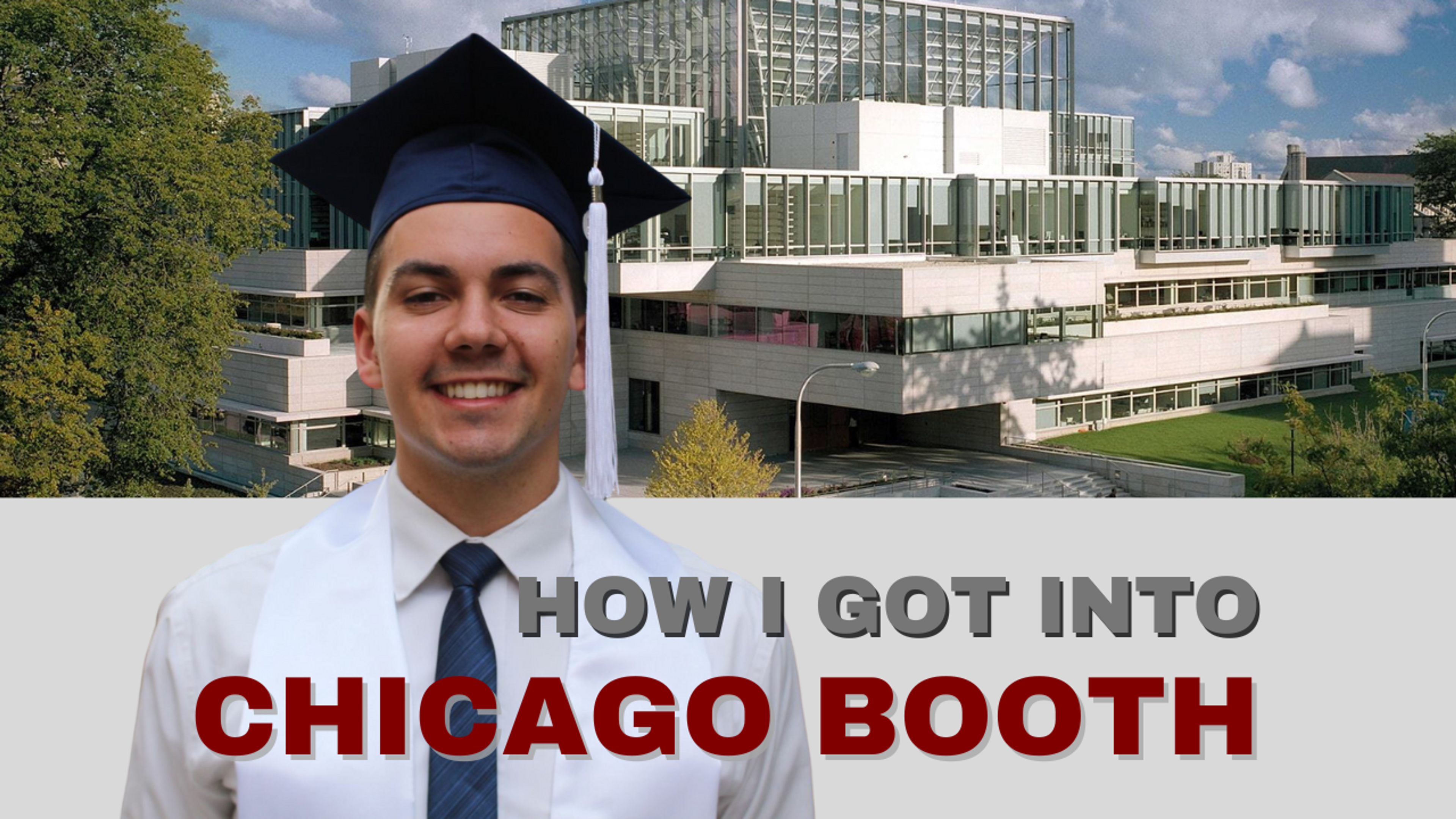My Stanford GSB Acceptance Journey: Navigating Imposter Syndrome and Handling Setbacks
Applying to an M7 program from a non-target undergrad institution can be daunting. Here is how one applicant navigated the process and got into Stanford GSB.

By Jasmine H.
Stanford GSB Admit | Essay Expert | Powerful Storyteller
Posted June 13, 2025

Join a free event
Learn from top coaches and industry experts in live, interactive sessions you can join for free.
Undergrad at a Non-Target School
Every applicant’s path to business school is a little bit different. Mine started at Cal Poly, a state school in San Luis Obispo, where I majored in Business Information Systems. Cal Poly is known for being fairly career-oriented; students were already looking for job offers in the fall of their freshman years.
This culture definitely affected me. By the end of my college career, I had completed eight very different internships in data science, business management, corporate strategy, and systems analytics, to name a few. Through these experiences, I learned a variety of skills and gained exposure to many industries. I found out what I liked, and what I didn’t.
The Path to an MBA
Applying to business school had somewhat always been on the radar, but I never formally considered it up until the summer before my final year at Cal Poly. My decision to apply became solidified when I came across a business idea that I was deeply passionate about. I wrote about this idea in my application essays, and felt strongly about my decision to pursue an MBA.
When considering different MBA programs, I looked for one that would offer me the resources I needed to grow this potential business. I also wanted a program that was tech-focused and supported entrepreneurs. The Stanford Graduate School of Business was the only one that fully fulfilled all of these criteria, and so, it was the only school I applied to.
Applying to Stanford
Because I decided to apply fairly late in the game, I didn't have much time to pull together my application. I started with the test, first trying the GMAT, then switching to the GRE when I realized it was more in line with my quantitative skills. I highly recommend taking a diagnostic test for both the GMAT and the GRE before starting to study. Standardized testing is not one of my strengths, so I studied from July 2021 through March 2022, a much longer time than most.
Scoring well on the GRE was an extremely slow journey for me, and to be completely transparent, one that came with a lot of self-doubts. I felt that if I couldn’t even get the score I wanted, then how on earth could I possibly get into Stanford? Some of the lowest, most difficult parts of my application came during this studying phase. Taking practice test after practice test and seeing little to no improvement was discouraging, to say the least. It took a lot of perseverance but eventually, I got the score I wanted.
If you’re reading this and are struggling with the standardized test, here is a short list of what I believe helped me finally land that amazing “Stanford-worthy” GRE score.
- I did numerous tutoring sessions with Alex S., which were incredibly helpful. Alex not only provided key strategies, but also helped me manage my test anxiety.
- I focused heavily on studying vocabulary, using both GregMat and ANKI as resources.
- I retaught myself HOW to read, tricking myself into being extremely passionate about the passages on the test, which then helped me answer the related questions.
After that, the rest of the application fell into place. I worked with Sam L. on the essays and short answers. What I appreciated about Sam was that he respected my ideas and writing. He kept my message and voice authentic, while making incredibly helpful suggestions on cohesiveness and structure. Unlike the standardized tests, I actually really enjoyed writing the essays.
In all of the writing components, I was incredibly meticulous. Every word, every character space, and every punctuation mark had to be justified. The admissions committee can’t read your mind, so you need to make sure that every piece of information you want to convey is clearly laid out for them. I spent a lot of time reviewing and polishing my application; I wanted to make every single part perfect.
Dealing with Imposter Syndrome
Throughout the application process, I experienced a lot of imposter syndrome. After reflecting on my attitude and thoughts, I realized that this stemmed from comparison. At Cal Poly, I knew of only one other person who had applied to the GSB through the deferred program. They had a better GPA, test score, internships, and leadership positions, and they didn’t get into Stanford. I constantly felt that since they didn’t get in, I had absolutely no chance.
After talking to some other deferred applicants, I realized this was super common. If you’re reading this, don’t let intrusive thoughts stop you from applying. I almost did.
One way I mitigated negative thoughts was by talking to my coaches. My Leland coaches genuinely made a massive difference in coping with my imposter syndrome. Anytime I voiced a concern or pessimistic thought, my coaches provided an encouraging, yet objective perspective. I began to understand from them that applying to deferred enrollment programs is a win-win. They reminded me that I could always apply again and that if I did, any prior application would work in my favor.
If deferred applicants are rejected and apply again, their candidacy is stronger, as it shows the school that you’re serious about an MBA. If you’re on the fence, know that even if you don’t get in, applying in itself is a good ROI for any future applications. Additionally, both of my coaches were students at the GSB, which helped change my thinking. If these individuals had gone through the same application, succeeded, and still believed that I had a chance, then maybe I really did have a shot.
Your application has to speak to the right AdCom member, in the right way, at the right time. It’s truly a shot in the dark, but one that you’ll regret if you don’t take it. Don’t let the fear of rejection keep you back from trying and giving it your all.
Advice for Other GSB Applicants
I want to end with one final piece of advice for fellow applicants from non-target undergrads. I want to remind you that though top schools like Stanford, MIT, etc. may feel daunting, they are looking for diverse candidates like you.
I thought that to get into Stanford, I needed to be at a top ten undergraduate institution. I was wrong. Your non-target undergrad does not discriminate against you; rather, it makes you stand out. Use your uniqueness to your advantage and don’t let it frustrate you. Lean on the people that have come before you, whether that be alumni, coaches, professors, or anyone else.
Relatedly, recognize your hard work and give yourself grace where it’s earned. I was working 40 hours a week, taking 5 classes at school, and studying for the GRE, all at the same time. I was very burnt out and felt that if I didn’t get in, all the hard work I was putting in would go to waste. Looking back, I wish I was kinder to myself and I wish I’d realized then that hard work never goes to waste.
It's rarely a bad decision to give your all. I hope you are kind to yourself throughout the application process. Good luck!
I'd love to help you get into your dream MBA program. I went through the process recently and can provide very relevant advice for your applications. Book a free intro call on my profile to get started!

Written by Jasmine
5.0
(36)
I'm an admit of the Stanford Graduate School of Business. I've helped MBA applicants get into Stanford GSB, Harvard Business School, Wharton, Columbia Business School, Chicago Booth, and more! Having edited hundreds of application essays and resumes, I've learned what it takes to create a successful MBA application for top business schools. In my application, I was extremely meticulous, making sure each and every word was intentional. I aim to help you with your application with this same diligence and effort. I am from a non-target undergrad (Cal Poly SLO), so I can help you create a great MBA application regardless of your academic or professional background. As a former deferred applicant, I'm also comfortable coaching deferred applicants on specific application strategies. I'm excited to be your biggest supporter and help you achieve your goals! I'd be honored to work with you on your applications.
Jasmine has helped clients get into organizations like:
Browse hundreds of expert coaches
Leland coaches have helped thousands of people achieve their goals. A dedicated mentor can make all the difference.

























